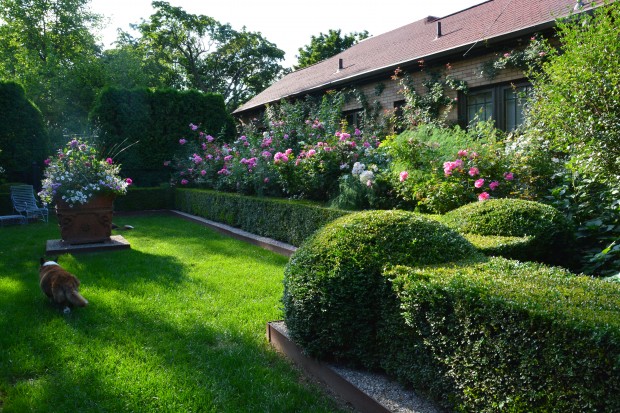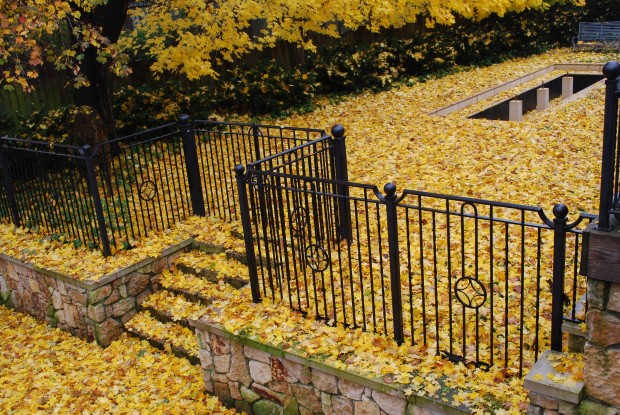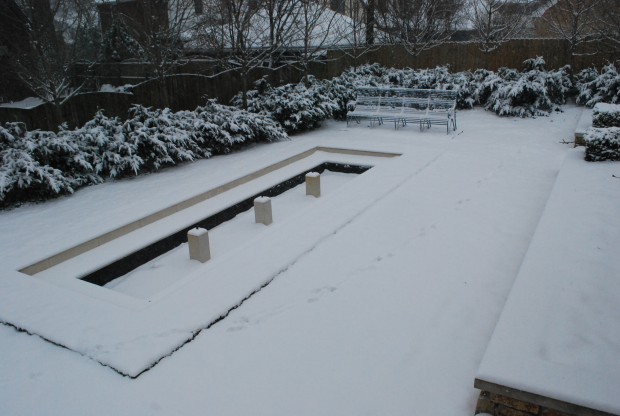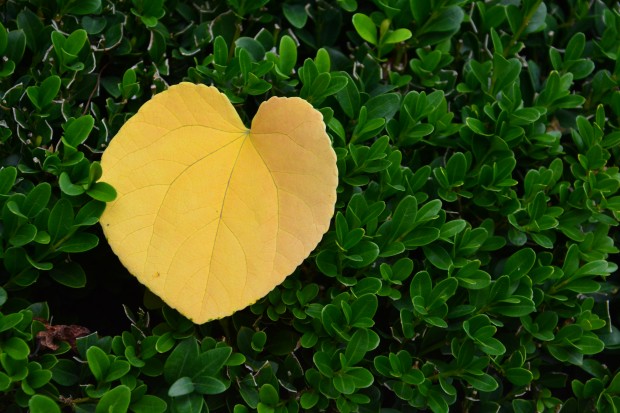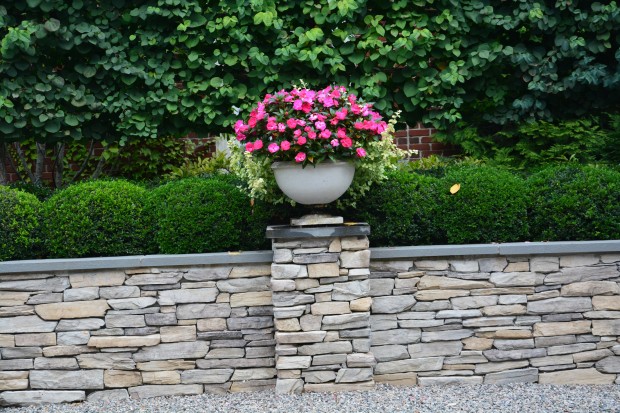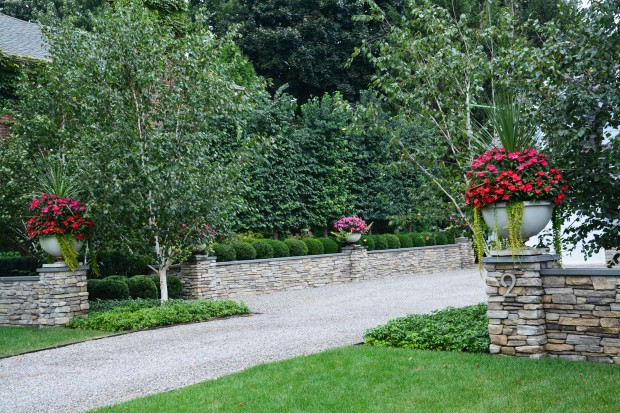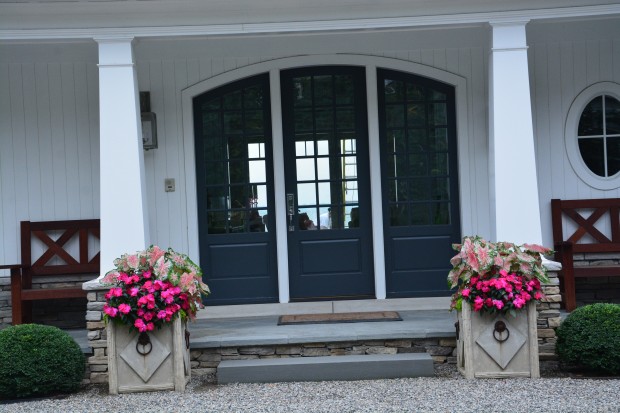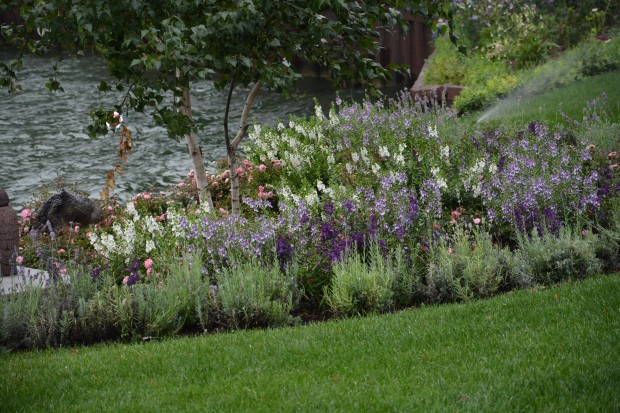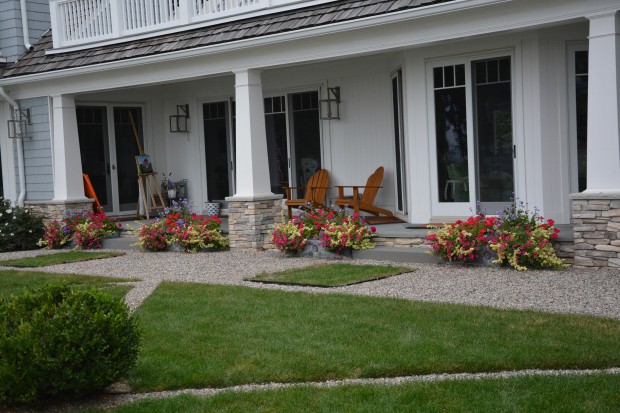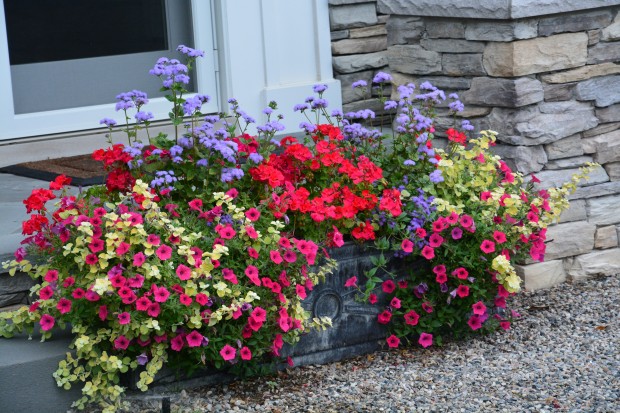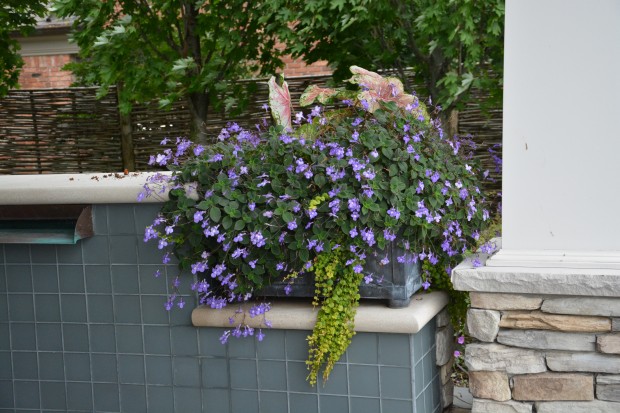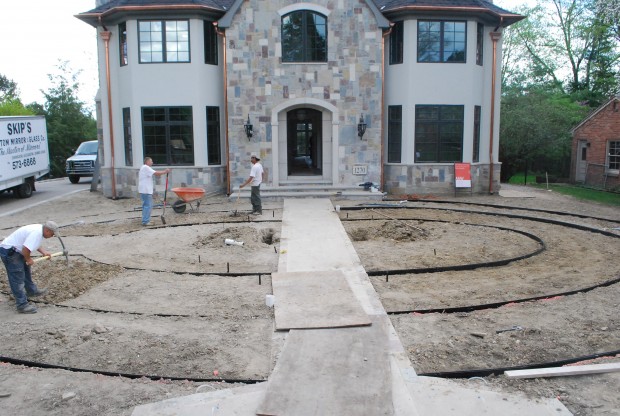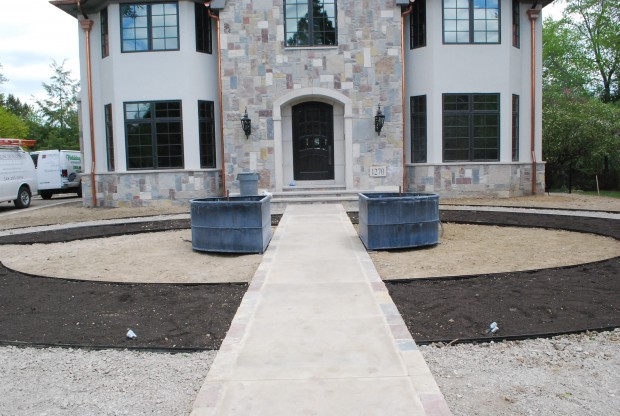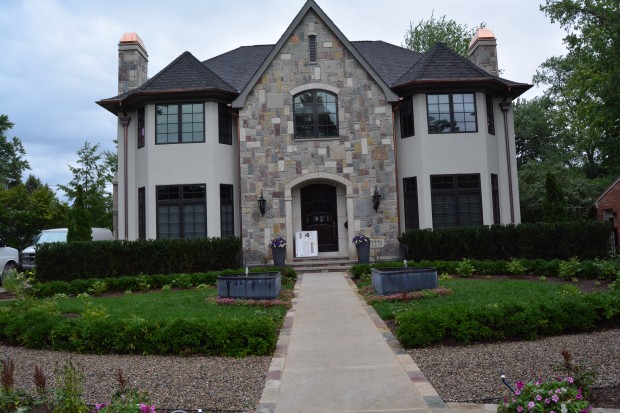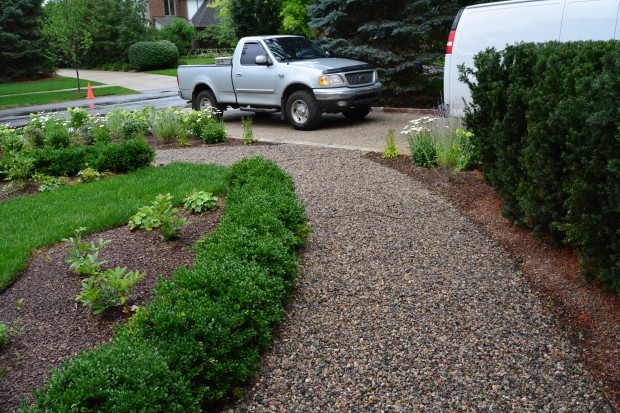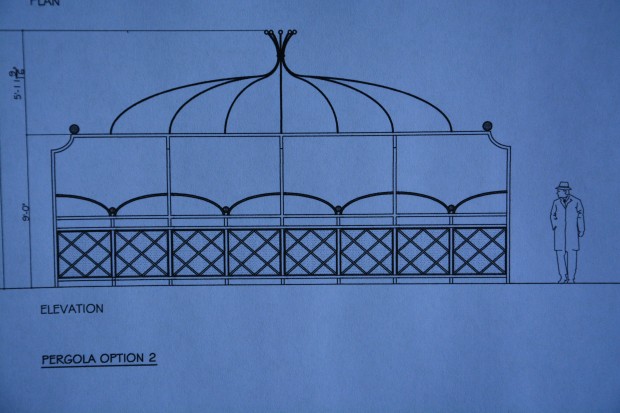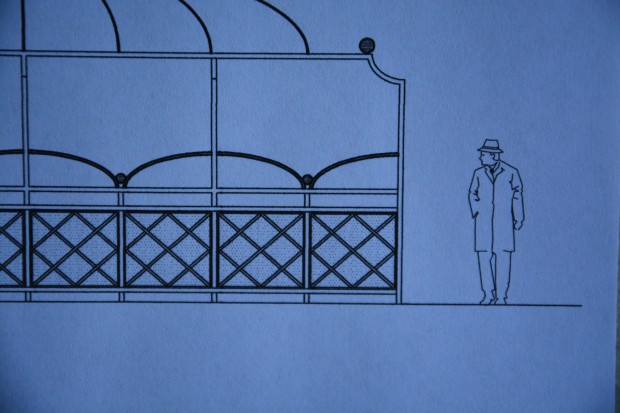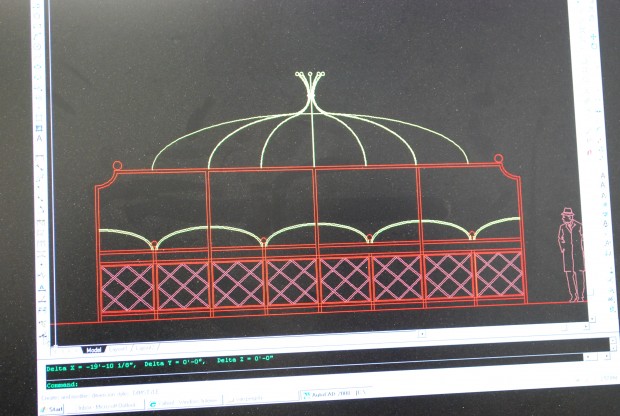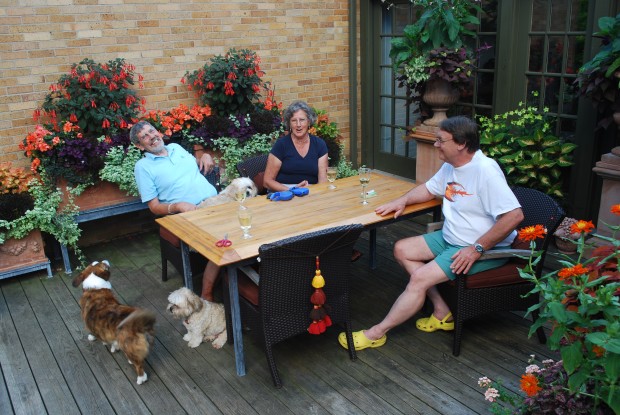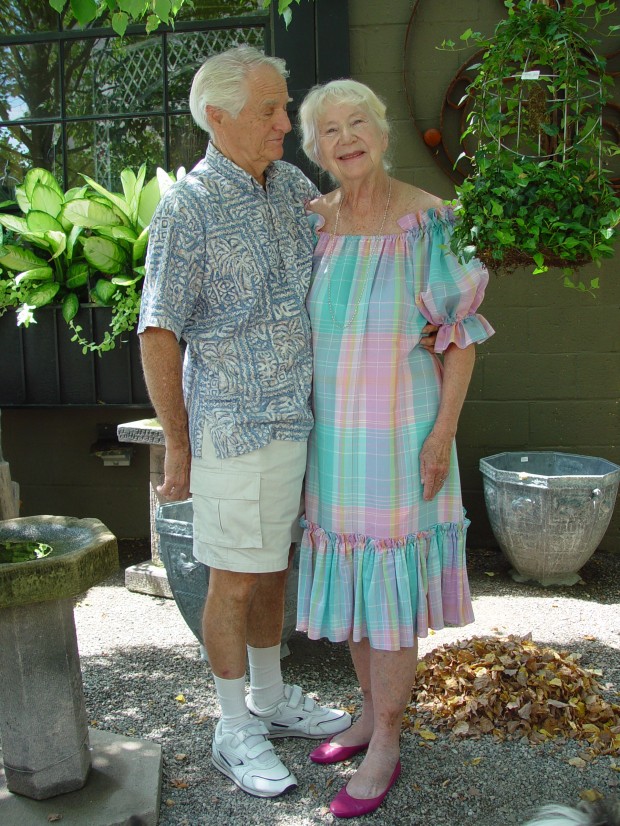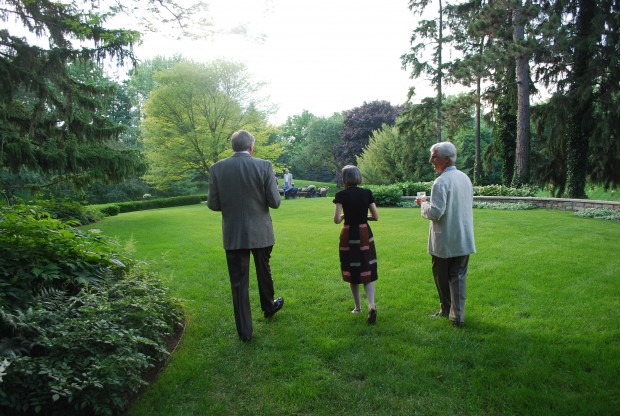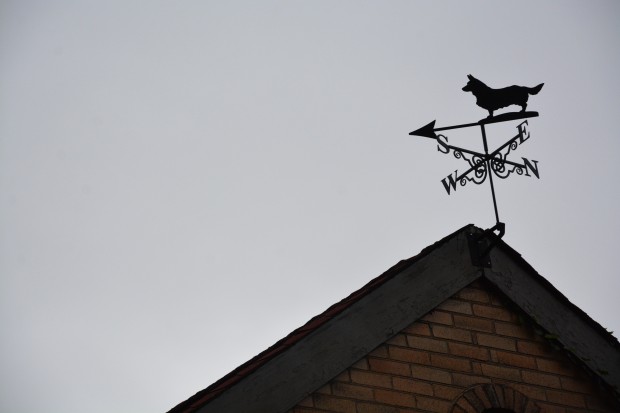 What’s your weather like today? Mine is cool and rainy, punctuated by torrential downpours of short duration. Two days ago the temperature was above 80 degrees by late afternoon. The forecast calls for 48 degrees tomorrow, and 39 degrees tomorrow night. The transition between summer and fall is marked by moody weather. There will be frequent swings in temperature, wind, rain, and fog. Gardeners follow the weather with great interest. Some plant by the phases of the moon. The weather forecast lets me know how to dress for a day in the garden. A dry hot and sunny summer day asks for different gear than a cold rainy fall day. An early winter day hanging holiday garland might as for warm clothes from side to side, and top to bottom.
What’s your weather like today? Mine is cool and rainy, punctuated by torrential downpours of short duration. Two days ago the temperature was above 80 degrees by late afternoon. The forecast calls for 48 degrees tomorrow, and 39 degrees tomorrow night. The transition between summer and fall is marked by moody weather. There will be frequent swings in temperature, wind, rain, and fog. Gardeners follow the weather with great interest. Some plant by the phases of the moon. The weather forecast lets me know how to dress for a day in the garden. A dry hot and sunny summer day asks for different gear than a cold rainy fall day. An early winter day hanging holiday garland might as for warm clothes from side to side, and top to bottom.
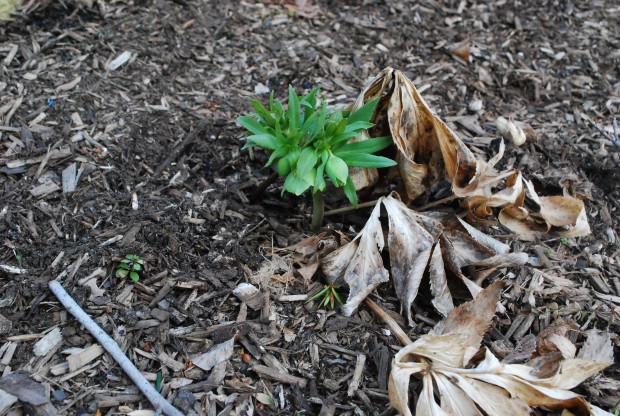 Weather forecasts the change of the seasons. Longer days, and warmer temperatures in late March signal the hellebores and crocus to come out of the ground. Plants do have a mechanism by which they recognize that the cold and dormant season is over. A biological clock. They know when it is too dicey to show themselves, and when it is time. In much the same way, they know when the winter is approaching. Their growth slows, and deciduous shrubs and trees prepare to shed their leaves in anticipation of the dormant winter season. I understand next to nothing of the biology and chemistry of this, but it seems like plants keep very good track of the weather.
Weather forecasts the change of the seasons. Longer days, and warmer temperatures in late March signal the hellebores and crocus to come out of the ground. Plants do have a mechanism by which they recognize that the cold and dormant season is over. A biological clock. They know when it is too dicey to show themselves, and when it is time. In much the same way, they know when the winter is approaching. Their growth slows, and deciduous shrubs and trees prepare to shed their leaves in anticipation of the dormant winter season. I understand next to nothing of the biology and chemistry of this, but it seems like plants keep very good track of the weather.
As long as I have been gardening, I routinely see weather conditions I have never seen before. I cannot remember a winter like our past one-not that I should. It was the coldest and snowiest winter we had had in over 100 years-why would I? A morning sky that is so pink that it changes the color of everything in the garden like a piece of colored acetate over my camera lens-we has such weather early this morning. Clouds of some fantastic shape and arrangement-there they are, though they never looked like that before or since.
Fog so dense that everywhere I looked was blinding white-that weather was on a boat bound for Mackinac Island many years ago. I have never experienced that again. Rain so hard that it bounced back skyward-memorable.
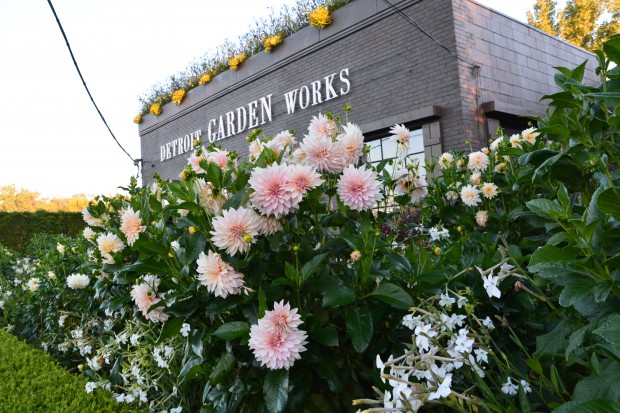 Our summer has been cool and rainy, overall. It was perfect weather to work, and have dinner outdoors. All of the plants in the landscape have that lush well watered look. So many evenings were perfectly comfortable-not too hot, nor too cold. That bland temperate weather was memorable. All of September was quite warm and sunny-the dahlias loved it as much as I did. The weather is a daily companion to a garden, which brings me to the real point of this post.
Our summer has been cool and rainy, overall. It was perfect weather to work, and have dinner outdoors. All of the plants in the landscape have that lush well watered look. So many evenings were perfectly comfortable-not too hot, nor too cold. That bland temperate weather was memorable. All of September was quite warm and sunny-the dahlias loved it as much as I did. The weather is a daily companion to a garden, which brings me to the real point of this post.
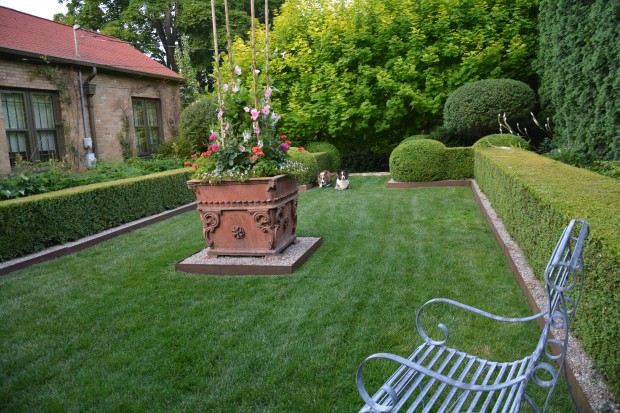 The longer I design landscapes and gardens, the more I believe that weather is one of the most critical design issues. I am not talking about plant hardiness, or light and shade conditions, or soil that never gets rain, or is always flooded. I think good design features the many faces of the weather. For many of my clients, my design is first and foremost concerned with establishing some structure- some good bones. Good bones can be built upon, or stand on their own. Structure in the landscape in my zone has to take the winter season into account. Our fall and winter is every bit of 6 months long. Once the perennial garden fades, and the leaves of the shrubs and trees fall, all that is left is the structure – the bare bones.
The longer I design landscapes and gardens, the more I believe that weather is one of the most critical design issues. I am not talking about plant hardiness, or light and shade conditions, or soil that never gets rain, or is always flooded. I think good design features the many faces of the weather. For many of my clients, my design is first and foremost concerned with establishing some structure- some good bones. Good bones can be built upon, or stand on their own. Structure in the landscape in my zone has to take the winter season into account. Our fall and winter is every bit of 6 months long. Once the perennial garden fades, and the leaves of the shrubs and trees fall, all that is left is the structure – the bare bones.
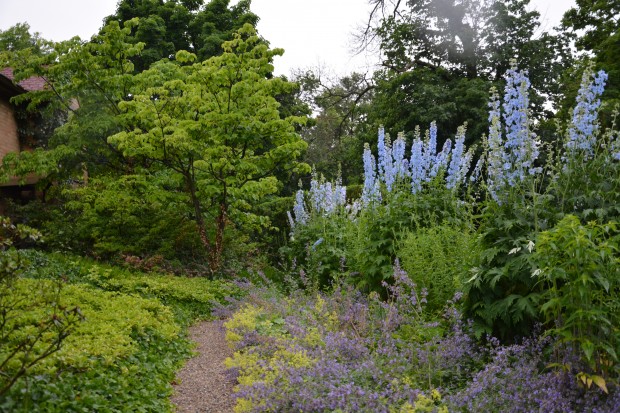 I only have one very small perennial garden. But for the trunks and branches of the dogwoods and magnolia, and the green of the yew hedge, that garden has little in the way of visual interest. The horseradish collapses in a heap of rotten leaves, as do the lady’s mantle, the bear’s britches, and the Rozanne geraniums. The phlox and hibiscus stand resolute for months after, but the snowy soon obliterates their shapes.
I only have one very small perennial garden. But for the trunks and branches of the dogwoods and magnolia, and the green of the yew hedge, that garden has little in the way of visual interest. The horseradish collapses in a heap of rotten leaves, as do the lady’s mantle, the bear’s britches, and the Rozanne geraniums. The phlox and hibiscus stand resolute for months after, but the snowy soon obliterates their shapes.
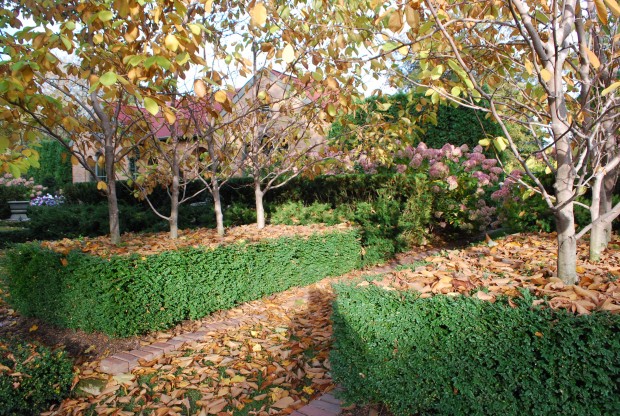 My evergreens respond to the weather in a very different way. The leaves that cover the tops of the boxwood underneath the magnolias celebrates the fall landscape. The wet weather makes every boxwood leaf shine and glitter. A dusting of snow illustrates the shapes described by that box. A thick layer of snow is like a winter hat. These rectangles of boxwood underneath the magnolias are very simple. Though they have been there for many years, my eye does not skip over them. Every day, the weather transforms them. The landscape is designed to change with the seasons, and change even more often with the weather.
My evergreens respond to the weather in a very different way. The leaves that cover the tops of the boxwood underneath the magnolias celebrates the fall landscape. The wet weather makes every boxwood leaf shine and glitter. A dusting of snow illustrates the shapes described by that box. A thick layer of snow is like a winter hat. These rectangles of boxwood underneath the magnolias are very simple. Though they have been there for many years, my eye does not skip over them. Every day, the weather transforms them. The landscape is designed to change with the seasons, and change even more often with the weather.
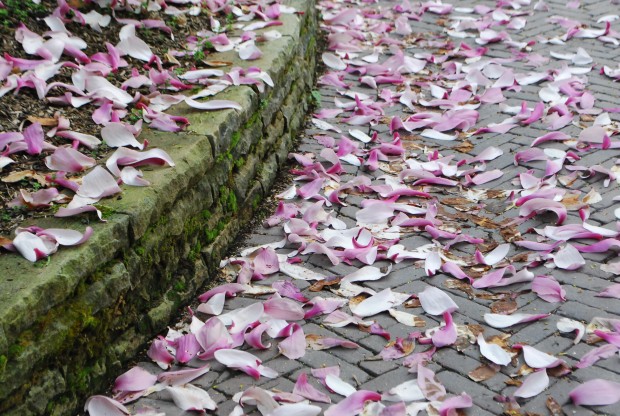 One can readily design a spring garden. Designing in celebration of spring weather is another issue altogether. The weather in Michigan is always a big fluid situation. The simpler the landscape, the more striking it will be, whatever the weather.
One can readily design a spring garden. Designing in celebration of spring weather is another issue altogether. The weather in Michigan is always a big fluid situation. The simpler the landscape, the more striking it will be, whatever the weather.


